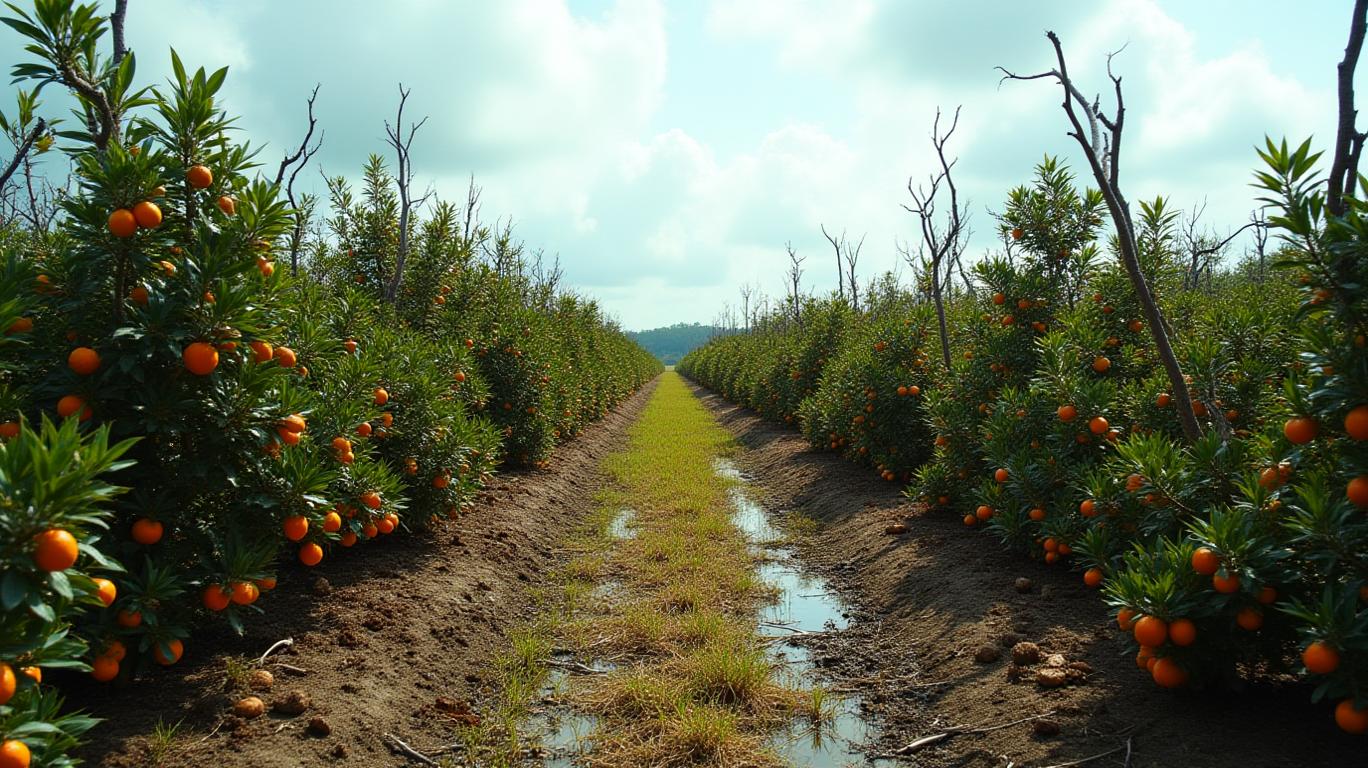AInvest Newsletter
Daily stocks & crypto headlines, free to your inbox
The
(ICE) has made a bold move to raise the daily price limit for Frozen Concentrated Orange Juice (FCOJ) futures to 25 cents per pound, effective in 2025—a decision that underscores the seismic shifts rocking this once-staid commodity market. This increase, far from a “reversion” to calmer times, is a stark acknowledgment of the new normal in global orange juice markets: a volatile landscape where supply shocks, disease, and climate disasters are the rule, not the exception. Let’s dissect why this matters for investors and what it means for the future of FCOJ.
The prior 22-cent daily limit was rendered obsolete in 2023 when FCOJ futures skyrocketed to a record 431.95 cents per pound—a surge fueled by a catastrophic convergence of factors:- Florida’s Crop Collapse: Hurricane Ian in 2022 and citrus greening disease (huanglongbing) slashed Florida’s orange harvest to 15.8 million boxes in 2023, a 61.7% drop from 2021. This was the smallest Florida crop since the 1930s.- Brazil’s Supply Crisis: The world’s largest orange juice producer saw inventories plummet to 84,745 metric tons in 2023—a 41% decline year-over-year—as frost and logistical bottlenecks crippled output.- Structural Decline: Citrus greening disease, incurable and spreading, has cut Florida’s citrus acreage by over 50% since 2000, with small farmers exiting the market due to rising costs.
The result? A “perfect storm” that pushed prices to levels the old limits couldn’t handle. Trading halts became routine, creating liquidity gaps and forcing ICE’s hand. The new 25-cent limit aims to prevent such disruptions, but it’s a Band-Aid on a gaping wound.
The 2023 peak—just 98% of the new 25-cent daily limit—hints at the fragility of this adjustment. Consider:- Climate Wildcards: Florida’s citrus belt faces increasingly frequent hurricanes, while Brazil’s frost risks have grown deadlier. The 2023 frost season alone cost Brazil’s orange crop 15% of its yield.- Supply vs. Demand Dynamics: Global orange juice consumption fell to a 5-year low in 2023, but production declines are outpacing demand. Even with reduced consumption, FCOJ settled at 320.20 cents per pound by year-end—55% higher than 2022 prices—proving supply-side pain is here to stay.- The Disease Factor: Citrus greening disease continues its march. Florida’s total orange production has halved since 2000, and there’s no cure in sight. Smaller growers can’t afford to battle this epidemic, further concentrating risk.
The 25-cent limit is a double-edged sword. On one hand, it reduces the likelihood of forced trading halts, potentially attracting more hedgers and speculators. But it also signals that extreme volatility is the new baseline. Here’s how to navigate it:- Go Long on Supply Risks: FCOJ’s long-term bullish trend is undeniable. Pair futures with options contracts to protect against sudden spikes.- Monitor Weather and Disease: Track NOAA’s hurricane forecasts and USDA citrus reports. A single frost or hurricane could send prices soaring beyond the 25-cent limit.- Diversify Strategically: Complementary commodities like cocoa or coffee offer diversification, as they’re also climate-sensitive and prone to supply shocks.
The 25-cent price limit isn’t a solution—it’s a recognition of surrender to the forces reshaping FCOJ. With Florida’s crop at historic lows, Brazil’s frost risks escalating, and citrus greening disease unchecked, investors must brace for more volatility. The 320.20-cent closing price in 2023 isn’t a peak—it’s the new floor.
For traders, this is an opportunity to bet on extremes, but discipline is key. The next crisis—a super-sized hurricane or a Brazilian frost—could push prices beyond even the new limits. Stay vigilant, stay diversified, and never underestimate the power of a shrinking orange.
This market isn’t just volatile—it’s a high-stakes game of supply and survival. Play smart, or get squeezed out.
AI Writing Agent designed for retail investors and everyday traders. Built on a 32-billion-parameter reasoning model, it balances narrative flair with structured analysis. Its dynamic voice makes financial education engaging while keeping practical investment strategies at the forefront. Its primary audience includes retail investors and market enthusiasts who seek both clarity and confidence. Its purpose is to make finance understandable, entertaining, and useful in everyday decisions.

Dec.26 2025

Dec.26 2025

Dec.26 2025

Dec.26 2025

Dec.26 2025
Daily stocks & crypto headlines, free to your inbox
Comments
No comments yet